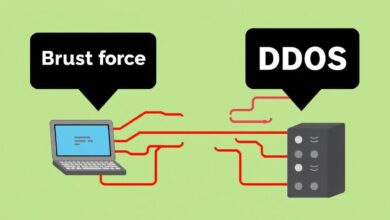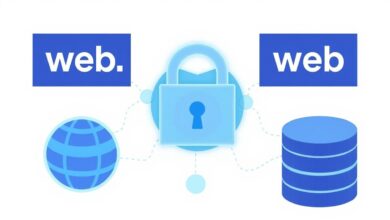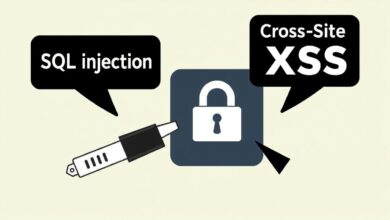Fortifying Your Server: Understanding the Principle of Least Privilege

In the world of server security, one principle stands tall as a fundamental pillar: the Principle of Least Privilege (POLP). It’s not just a technical rule; it’s a security mindset that, when applied correctly, significantly reduces the risk of data breaches and unauthorized access.
At its core, the Principle of Least Privilege dictates that every user, application, process, or system should be granted only the bare minimum permissions, access rights, or resources necessary to perform its intended function and nothing more. Imagine giving someone keys only to the doors they absolutely need to open for their job, rather than a master key to the entire building. That’s the essence of POLP.
Why is the Principle of Least Privilege Crucial for Server Security?
Adhering to POLP isn’t about making things difficult; it’s about building resilience into your server environment. Here’s why it’s so vital:
- Reduced Attack Surface: Limiting permissions means attackers who compromise a low-privilege account or application gain very limited access. They can’t easily move laterally through the system or access critical data they don’t need.
- Containment of Breaches: If a system or application is compromised, POLP ensures the damage is confined. The attacker can only affect the resources the compromised entity had access to, preventing escalation and widespread impact.
- Minimizing Errors: Accidents happen. A user with excessive permissions might accidentally delete critical files or misconfigure a vital service. POLP prevents such unintentional damage by restricting potentially harmful actions.
- Improved System Stability: Applications running with only the necessary privileges are less likely to interfere with other system components or cause instability.
- Easier Auditing and Monitoring: With restricted access, it’s simpler to track and audit actions. Unusual activity from a low-privilege account is immediately suspect, whereas such activity from an administrator account might blend in.
- Compliance Requirements: Many industry regulations and compliance standards (like GDPR, HIPAA, PCI DSS) implicitly or explicitly require the implementation of least privilege to protect sensitive data.
Without POLP, a single compromised account could lead to complete system takeover, data exfiltration, or widespread disruption. It’s a foundational layer of defense that complements firewalls, intrusion detection systems, and other security measures.
[Hint: Insert image/video illustrating restricted access or user permissions levels here]Implementing Least Privilege: Practical Steps for Your Server
Putting the Principle of Least Privilege into practice requires careful planning and ongoing management. It applies to various aspects of server administration:
User Accounts
- Define Roles: Clearly define user roles based on job functions (e.g., web administrator, database administrator, monitoring user).
- Grant Specific Permissions: Assign permissions based on these roles, granting only the minimum needed to perform tasks within that role. Avoid using administrator accounts for routine tasks.
- Regular Review: Periodically review user permissions to ensure they align with current responsibilities. Revoke access immediately when users leave the organization or change roles.
- Separate Administrative Accounts: Use separate, dedicated accounts for administrative tasks. These accounts should only be used when necessary and ideally with multi-factor authentication.
Applications and Services
Applications and background services often run under specific user accounts. These accounts should also operate with the least privilege necessary.
- Dedicated Service Accounts: Use dedicated, non-interactive accounts for running applications and services.
- Limited File System and Network Access: Configure these service accounts to only access the directories, files, and network resources they explicitly need.
- Restrict System Calls: Limit the system calls an application can make if possible, using tools like AppArmor or SELinux on Linux.
Network Access
Least privilege extends to network connectivity. Servers should only be able to communicate with other systems and services that are essential for their function.
- Firewall Rules: Implement strict firewall rules that only allow necessary inbound and outbound connections based on service requirements.
- Limit Open Ports: Close all unnecessary ports on the server.
- Segment Networks: Use network segmentation to isolate different types of servers and prevent lateral movement in case of a breach.
Configuration Files and Data
Access to sensitive configuration files and critical data directories should be heavily restricted.
- Strict File Permissions: Use file system permissions (like Linux’s chmod/chown or Windows ACLs) to limit read, write, and execute access to configuration files, logs, and data stores.
- Encrypt Sensitive Data: Encrypt data at rest and in transit, adding another layer of protection even if access is gained.
Implementing these steps requires a thorough understanding of what each user, application, and system needs to do to function correctly. It’s a process of continuous refinement, not a one-time setup.
[Hint: Insert image/video illustrating file permissions or firewall rules here]Challenges and Considerations
While the benefits are clear, implementing POLP can present challenges:
- Complexity: Determining the absolute minimum required privileges for every entity can be complex, especially in large, dynamic environments.
- Potential for Disruption: Overly restrictive permissions can break legitimate functionality, leading to user frustration and requests for broader access. This requires careful testing and iteration.
- Ongoing Management: As systems and roles evolve, permissions need to be reviewed and updated constantly.
Effective implementation requires a balance between security and usability. Start by identifying critical assets and the entities that interact with them. Grant minimal permissions, test thoroughly, and adjust as needed based on real-world usage patterns.
For a deeper dive into managing user permissions specifically, you might find our article Understanding User Roles and the Principle of Least Privilege helpful.
POLP in Modern Server Environments
In today’s complex server landscapes, including cloud environments, containerized applications, and microservices, the Principle of Least Privilege remains as relevant as ever. Cloud providers offer Identity and Access Management (IAM) tools designed specifically to implement granular permissions. Containerization technologies like Docker and Kubernetes allow for defining strict security contexts and resource limits for applications.
Adopting an automated approach to managing permissions can significantly ease the burden of maintaining POLP at scale. Configuration management tools and infrastructure-as-code platforms can help define and enforce access policies consistently.
The Principle of Least Privilege is a cornerstone of a strong security posture. By limiting access to only what is essential, you drastically reduce the potential impact of security incidents, whether they stem from external attacks or internal errors. It’s an ongoing process that requires vigilance, but the enhanced security and peace of mind it provides are invaluable for any server administrator.
For further reading on the topic of least privilege in broader contexts, you can refer to resources like the Wikipedia page on the Principle of Least Privilege.




